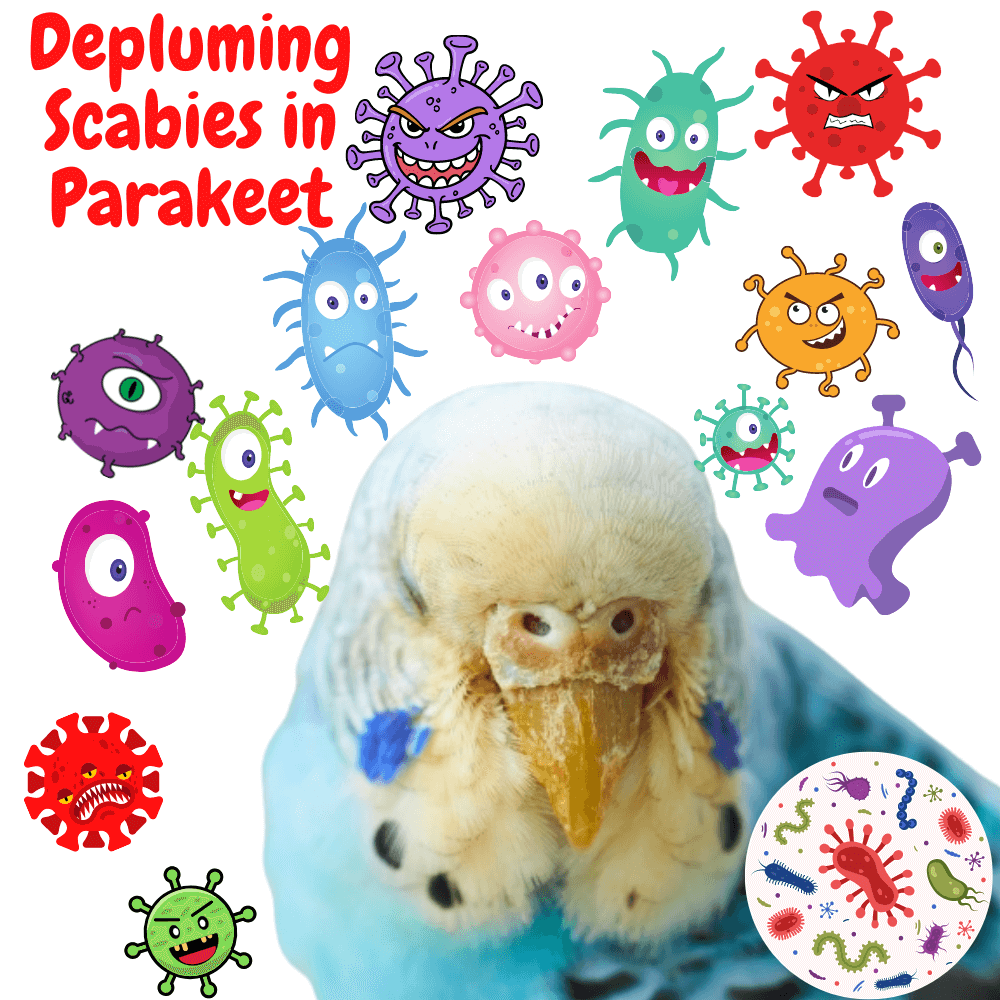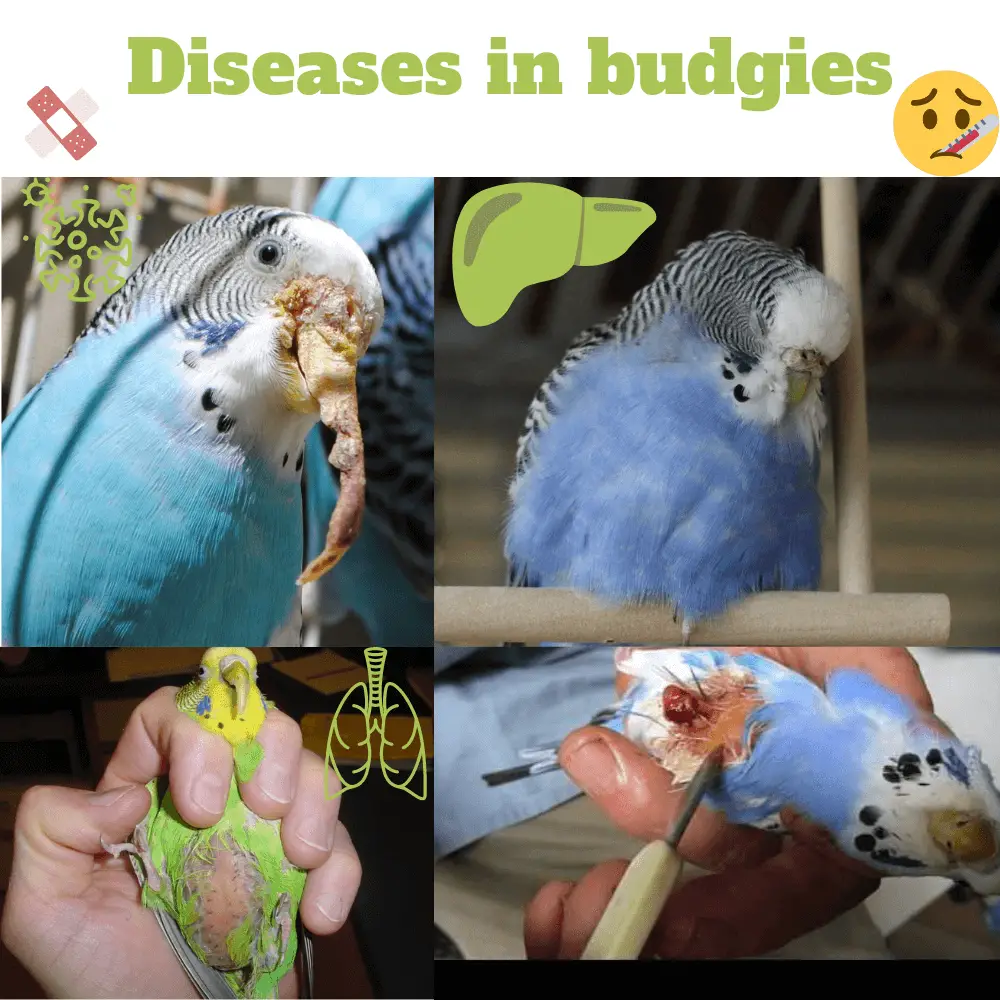
Acariosis or Parakeet Mange: Causes, Symptoms, and Treatment Parakeets and parrots can sometimes become contaminated by parasites. If they are found on feathers or skin, such as lice or ticks, spotting them is quite easy. On the other hand, for acariosis or scabies of parakeets which are internal parasites, their presence will be detected only with the appearance of the first symptoms.
Rest assured, effective treatments exist, which are to be applied as soon as the infection is discovered. Here’s how to detect and treat the acariosis (or scabies) of your budgies. And also how to prevent it? Here is some information from our experts.
What is acariosis?
In a few words
Acariasis is a contagious disease caused by tiny internal parasites, which can affect animals, plants, and humans. This infection, also called scabies, manifests itself in different forms, and evolves on the beaks and more rarely, the legs and cloaca of some domestic birds such as parakeets.
The mites to feed and lay eggs will dig small tunnels in the skin and horn of the bird, which causes significant lesions on the beak, wax (the part between the skull and the beak of the bird), and legs.
What causes acariosis?
These parasites may have infected the parakeet from birth (the disease remains on standby for a very long time), or have been transmitted by congeners, on a farm for example. Overcrowding and therefore overcrowding, as well as insufficient hygiene of the cage or aviary, can also be a reason. A lack of vitamin A that weakens the immune system could be one of the causes of their manifestation.
Multi-Vitamins for Parakeets and Parrots
Even if its development sometimes seems impressive in birds, acariosis or scabies of parakeets, if detected in time, is easily treated.

What are the symptoms of acariosis in budgies?
Acariasis is therefore a disease that can remain silent for many months, and that will have already evolved well when the first manifestations appear. It is then important, as for any animal, to remain very attentive to the behavior of its bird and its general state of health.
The first sign of acariosis infection will be excessive scratching. The budgie will seek to rub incessantly, any object within its reach. She may seem dejected and less reactive to solicitations. Other symptoms should also alert you:
- The appearance on the beak and wax, thick scaly, whitish growths, similar to crusts
-
The legs will have some kind of yellowish-white calcifications that will lift the scales. They may swell and eventually deform
- Feathers will be dull, abnormally swollen, or flattened
-
The bird will drink more than usual
-
The loss of feathers around the beak and on the head.
Similar signs such as the different appearance of the beak or the change in color of the wax could be due to something other than a scab: a fungus, another kind of bacteria or simply aging. In any case, consulting a veterinarian is necessary, since only he will be able to determine the cause of the disease and prescribe the appropriate therapies.
How to treat scabies in budgies?
If you have several budgies and one of them seems to be affected, isolate it in a separate cage. On the other hand, the drug treatment will be applied to all your birds to be sure to have eliminated all mites, as well as their eggs and larvae. Indeed, the parasites that cause scabies can be transmitted very easily and especially remain inactive for some time.
Care for budgies
Does acariosis seem undeveloped on your budgie? Try to treat it first with natural remedies, such as medical paraffin – which is applied to lesions with a cotton swab – but first, seek advice from your veterinarian.
The most appropriate and effective treatment will always be the one recommended by an avian veterinarian or specialized in NAC (New Pets). He will prescribe insecticides based on selamectin or ivermectin, dosed according to the weight of your budgie. These drugs will be drops to be applied directly to the skin, between the feathers.
Method for applying the care product
Even if very well-tamed, your bird may get scared when you seek to treat it. Two solutions then exist:
- For birds who are not afraid and confident: get help from another person who will hold the bird while with your wet finger, you will spread the feathers of the neck and put the product down. You can also massage the paws with lotion if you have been advised to do so.
-
For wary birds: place a square cotton cloth, open in your palm, and then with this hand covered with fabric, gently grasp your bird. Wrap it in the fabric and then when you feel relaxed, release its neck and paws, and proceed with the treatment.
Treatment of the cage or aviary
Wash the cage very meticulously as well as all its accessories in cold water with bleach and rinse and dry everything, very carefully. The wooden perches will be cleaned and then baked for a few minutes to sanitize them. Anything that seems difficult to disinfect or porous (foam, fabric) will be discarded.
Keep in mind that the parasites (mites) responsible for acariosis are invisible to the naked eye and could remain – even if they barely survive outside the bird – on a poorly scrubbed object.
If the scabies infection is very important, you can use bactericides, fungicides, or virucidal, being very careful not to spread them on birds. This thorough cleaning will be repeated throughout the treatment.
Preventive treatment
In order to minimize the risk of contamination as much as possible, it will be best to be vigilant from the adoption and installation of your budgies. You will be sure to have applied the best prevention by putting in place certain rules:
- Maintain perfect hygiene of the cage and the environment of the parakeets (toys, perches, bowls, nests, etc.);
-
Ensure they are properly nourished and hydrated, with a vitamin supplement if necessary;
-
Be attentive to the slightest change in their behavior;
-
Avoid excessive stress (heavy noise, sudden movement, fear…);
-
Immediately quarantine a bird likely to be infected in a separate cage;
-
Treat all of its congeners if the parakeet is really sick.
Finding out about the breeding from which your birds come can also allow you to know the conditions in which they were born.
Remember! Parakeet acariosis is a contagious and relatively common infection, with impressive lesions, but can be cured if taken at the right time. Prevention is always the best way to avoid contagion. In case of doubt, do not hesitate to consult a specialized veterinarian who will give you the necessary treatment and will also reassure you! Visit our site, you will find all the products adapted (equipment, care, food, and hygiene) to your budgies!
How to Get Rid of Mites on Parakeets at home?
SOURCE: Dzedemina
Related Articles:




















